Anaxyrus woodhousii
—
Woodhouse’s Toad
The genus Anaxyrus was split from Bufo by Frost et al in 2006. This split is particularly controversial among herpetologists, and many references still use the long-established Bufo.
Subspecies I've seen:
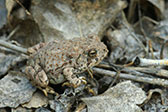
A. w. australis
Southwestern Woodhouse’s Toad
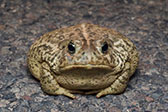
A. w. woodhousii
Rocky Mountain Toad
Anaxyrus woodhousii australis
—
Southwestern Woodhouse’s Toad

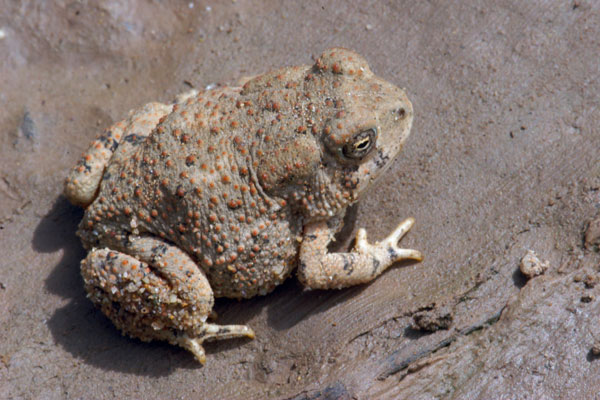
My wife and I encountered several of these toads near the San Pedro river. They were all young toadlets, only an inch or so long. I'm not confident that I've identified them correctly; a friend believes that they are probably Red-spotted Toads (Anaxyrus punctatus), but they really don't look like that species to me. At least one other correspondent also thinks they look like red-spotted toads, but to me the head looks too thick and the parotid glands look too large for these to be A. punctatus. If you have any further information, please send me email.
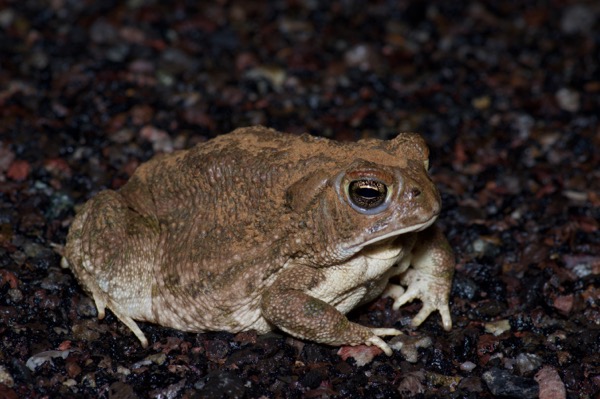
I am not certain that this is a Woodhouse's Toad rather than a Great Basin Toad. Normally I should be able to tell them apart from the pattern of light and dark patches, and the colors of those patches, but this toad has just emerged from underground and is covered with so much dirt that its appearance when clean is not easy to determine. The snout shapes and parotid gland shapes of the two species are also a little different, and I think this one looks a little more like Woodhouse's, but I could very well be wrong. (Both species can be found in this area.)
Anaxyrus woodhousii woodhousii
—
Rocky Mountain Toad
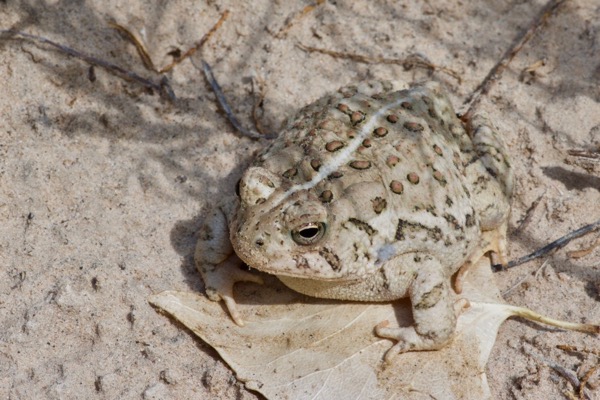
On a blisteringly hot day, this medium-sized toad was hanging out in the shade a couple of feet from a river. Three adults and seven dogs overlooked its presence but my toad-spotting eye did not fail me.
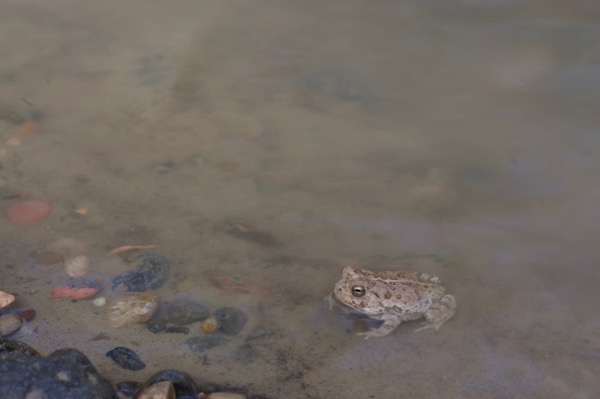
This young toad watched, perhaps in bemusement, perhaps in horror, as four or five small dogs and five or six large dogs frolicked in the water a few feet away.
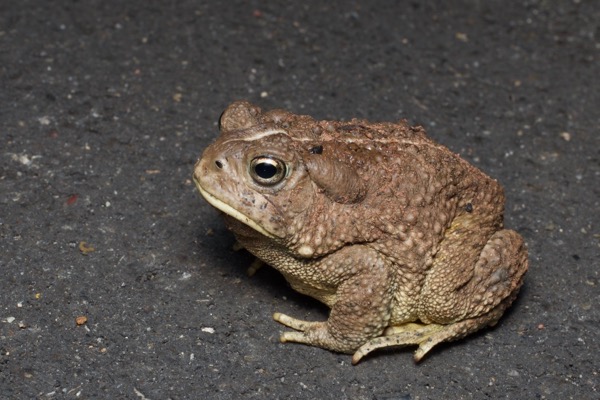
Beauty is in the eye of the beholder and all that, but there is something not right about the ratio of head size to body size for this toad.
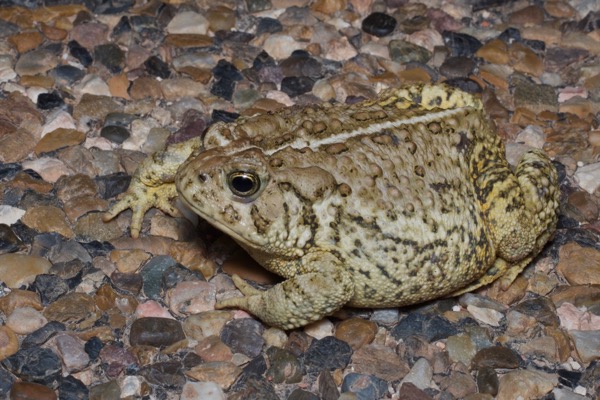
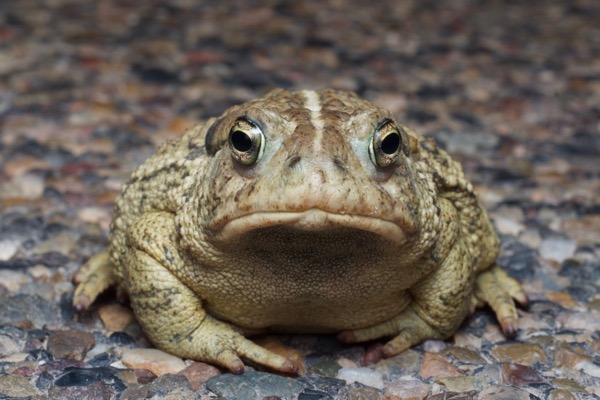

These toads look so very self-confident.
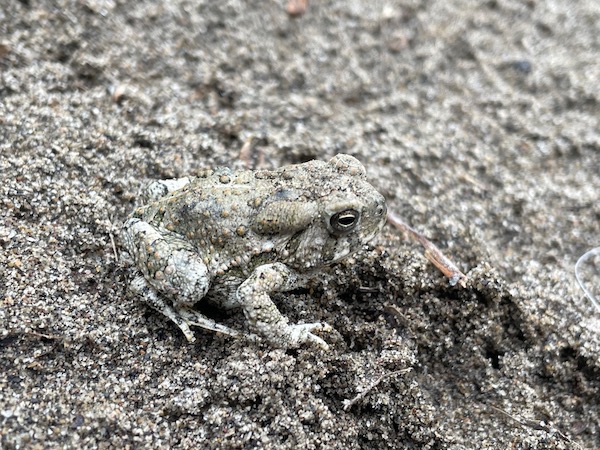
Drizzle and low expectations of seeing wildlife tricked me into leaving my proper camera in the camper van when we stopped to check out this very interesting Lewis & Clark site. And then this cute little toad hopped across the trail.
Printed references:
- Behler, J. L., King, F. W. 1979. The Audubon Society Field Guide to North American Reptiles & Amphibians
- Brennan, T. C. and Holycross, A. T. 2006. A Field Guide to Amphibians and Reptiles in Arizona
- Crother, B. I. (ed.) 2017. Scientific and Standard English Names of Amphibians and Reptiles of North America North of Mexico, with Comments Regarding Confidence in Our Understanding, Eighth Edition
- Elliott, L., Gerhardt, C. and Davidson, C. 2009. The Frogs and Toads of North America
- Stebbins, R. C. 2003. Peterson Field Guide to Western Reptiles and Amphibians, Third Edition